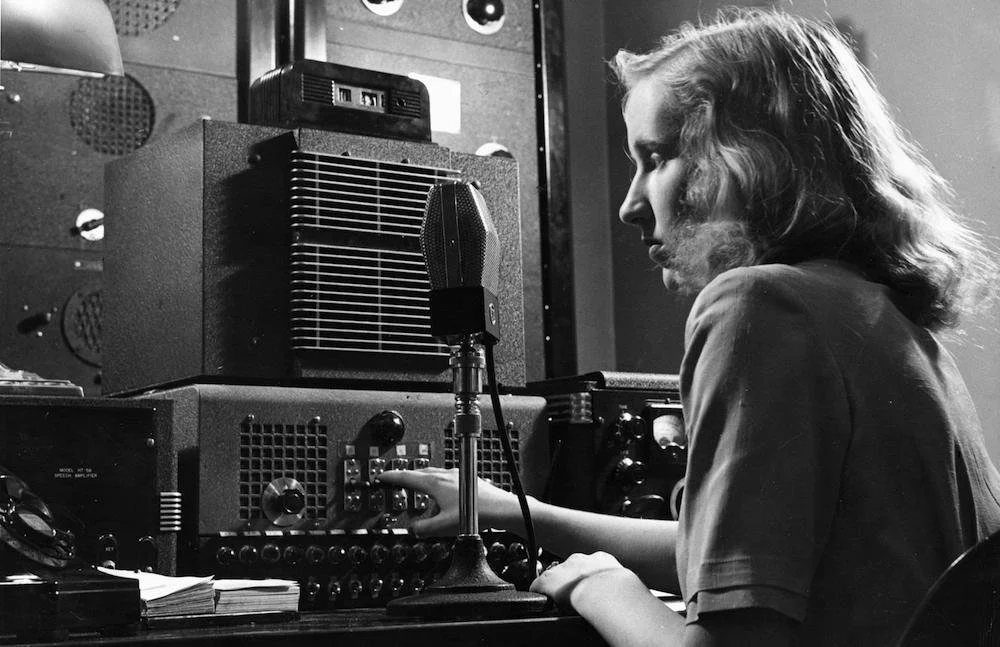Anny Ondra was a major, international star, born in Bohemia. She faced many obstacles to get to such a status, such as major pressure from her family over many years. Still, she prospered and how she wanted. By the end of her life, she married and starred in over 90 films.
Brief History of Czech Bunkers and Their Future
Eliska Junkova: Queen of the Steering Wheel
Epidemiologist Ervin Adam helped eradicate polio in Czechoslovakia
Ervin Adam, a world-renowned Czech epidemiologist, died on 3/21/23 at the age of 101 in Houston, Texas. The doctor, who was instrumental in Czechoslovakia being the first country in the world to eradicate polio, went through several concentration camps during World War II because of his Jewish origin and survived a death march. From 1968 he lived in exile – first in Canada and later in the United States. In 2013 he received the prestigious Czech Head Award.
Radio Revolution
Radio and its revolutionary effect were felt in Czechoslovakia just as it was in the rest of the world. It began with the first broadcasts, occurring before World War I, into the first Czech-produced program in late 1919. Of course, as radio technology progressed and advanced, its use as a medium for propaganda grew more and more robust. Despite its use in propaganda, radio also served as a tool to disseminate important information about the nation and the world at-large.
Vlasta Adele Vraz : A Czech-American during Communist Czechoslovakia
Vlasta Adele Vraz was a Czech-American who served as the director of American Relief for Czechoslovakia after World War II and was arrested as a spy by the Communist government in Czechoslovakia. She was released, becoming the president of the Czechoslovak National Council of America. She spent most of her life before World War II surrounded by writers and writing for her family’s newspaper, the “Svornost.” After her release, she continued as an editor for the American Bulletin and Vestnik before she died in 1989.
Czech Cottage Culture
Karlovy Vary Film Festival
The Karlovy Vary International Film Festival, or KVIFF, hosts about 200 films from around the world and is the oldest film festival. Located in Karlovy Very, Czech Republic, the film festival is held annually in July and is the most prestigious festival in Central and Eastern Europe, boasting a popular feature film competition.
Božena Hauserová (1914 - 2009)
Božena Hauserová was a lawyer turned CIA operative for the United States to help fight against Germany during the World War. She and her husband, Charles Lauwers, moved to the United States in 1941 after hearing news of the war, after which she enlisted, following her husband. In 1944, she participated in Operation “Sauerkraut,” where she’d spread rumors, provide fake orders, and pass around discouraging leaflets, all to spread propaganda among German soldiers. Her work was a success, being declassified after her death in 2009.
Czech Beer : A Brief History
From the Brevnov Monastery to the modern-day Pilsner, the Czech people have been enjoying beer for over a thousand years. Known as the beer of tradition, Czech beer is ingrained into history itself. When beermaking was banned. the Brenov Monastery, as the first-ever Bohemian brewery, was exempt. Initially, after the ban on brewing ended, only noble families or homeowners were allowed to brew beer. It was in 1842 that the famous Pilsner was created.
The Czech Response to the American Civil Rights Movement
The American Civil Rights Movement became a method of propaganda against the United States to gain support and sympathy from non-socialist states. The Czechoslovakian government would invite activists to the nation so that communism would be promoted, including singer Paul Robeson, who would sing at the Prague Spring classical music festival in 1949. Between the 1960s and 1980s, Czechoslovakia continued to push communism in African nations, broadcasting the benefits of communism and what it would provide to Africans.
Frantiska Plaminkova
Františka Plamínková, founder of the National Council of Women, was a trailblazer in feminism and women's rights. Her fight for women's suffrage and self-personhood was a long one, beginning in 1903 with the Czech Women's Club. Sadly, she was one of many executed by the Nazis in retaliation to Reinhard Heydrich's assassination. Milada Horakova continued Plamínková's work.
Mother's Day in Czechia: Charlotte Masaryk
Through history, celebrating Mother’s Day in the Czech Republic was more complicated than one could imagine. It begins with the wife of Tomas Masaryk, Charlotte, who fought for women’s rights and taught her daughter, Alice Masarykova, to do the same. After her mother’s death, Alice established Mother’s Day in 1923. The complications of Mother’s Day lasted for a long time, into Czechoslovakia’s Communist occupation.
The Czech Republic and its’ Contribution to Cinematography
The Czech Republic's Communist-Era Architecture
For the Communist countries in Eastern Europe, the necessary rebuilding following World War II was accomplished in the construction style that the Soviet Union popularized. As a result of this period, the Czech Republic has many buildings and monuments that differ significantly from the historic ones surrounding them, serving as a reminder of its Communist era.












